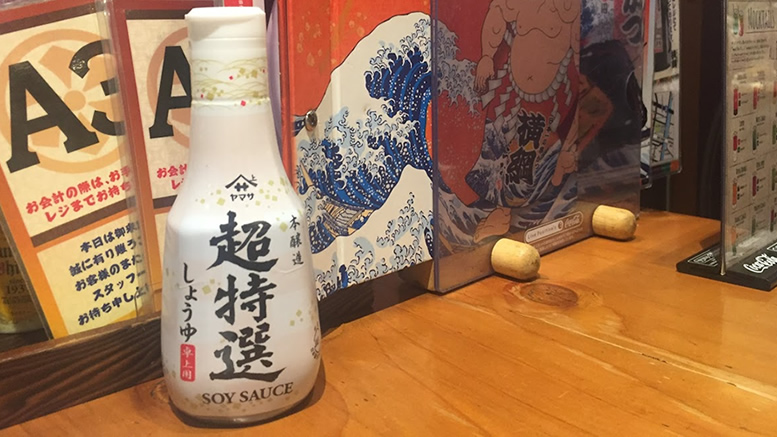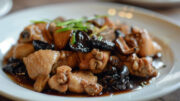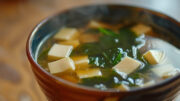Soy sauce is one of Asia’s most versatile and widely used seasonings, essential to the flavours of many cuisines across the continent. However, not all soy sauces are created equal—each variety has unique characteristics tailored to specific dishes and culinary styles. This guide will take you through the main types of soy sauce from Chinese, Japanese, Korean, Thai, and Southeast Asian cuisines, discussing their uses and helping you decide which ones to have on hand to start your journey into Asian cooking.
1. Chinese Soy Sauces
Light Soy Sauce (生抽, Shēngchōu)
Light soy sauce is the go-to in Chinese cooking, lending a salty, savoury taste to stir-fries, marinades, and dipping sauces. Often lighter in colour but with a rich flavour, it’s a staple in most Chinese kitchens. It’s perfect for seasoning dishes without darkening the colour significantly.
Dark Soy Sauce (老抽, Lǎochōu)
Dark soy sauce is thicker, less salty, and slightly sweeter than light soy sauce, with a rich caramel colour. It’s used more for its colour and slight sweetness, making it ideal for braises and stews. Adding dark soy sauce to a dish can give it a beautiful, deep brown hue.
Mushroom Soy Sauce
This is a variation of dark soy sauce, infused with the earthy umami of mushrooms, often used in vegetarian dishes for added depth.
Best to Have on Hand: Light soy sauce and dark soy sauce are must-haves for Chinese cooking, as they each serve distinct purposes in recipes. Light soy sauce is particularly versatile, while dark soy sauce is essential for creating rich colour in braises and marinades.
2. Japanese Soy Sauces
Koikuchi (濃口醤油)
The most common soy sauce in Japan, koikuchi is an all-purpose soy sauce, brewed with both soy and wheat. It has a balanced, savoury flavour with slight sweetness, making it suitable for a range of dishes from sushi to ramen and marinades. This is the soy sauce found in most Japanese kitchens and is the most versatile for beginners.
Usukuchi (薄口醤油)
This lighter-coloured soy sauce has a saltier taste but a lighter hue. It’s used in dishes where a deep colour isn’t desired but a more delicate flavour is preferred, such as in broths for noodles or light soups.
Tamari
Originally from Japan, tamari has little to no wheat, making it a great option for gluten-free cooking. It’s thicker and slightly less salty than koikuchi, with a full-bodied flavour perfect for dipping and cooking.
Best to Have on Hand: Koikuchi soy sauce is the most versatile and a great all-purpose soy sauce for most Japanese dishes. Tamari is also useful, especially if you’re looking for a gluten-free alternative.
3. Korean Soy Sauces
Ganjang (간장)
Korean soy sauces are usually less salty and milder, with some sweetness. Korean ganjang comes in several varieties:
Jin Ganjang: A widely used soy sauce for cooking and seasoning.
Guk Ganjang (Soup Soy Sauce): Saltier and lighter in colour, this soy sauce is used primarily in soups and stews to season without darkening the broth.
Best to Have on Hand: Jin ganjang is versatile and works for most Korean cooking. If you enjoy making soups and stews, guk ganjang can be a nice addition to your pantry.
4. Thai Soy Sauces
Thin Soy Sauce
Similar to light soy sauce, thin soy sauce in Thai cuisine is used for general seasoning, stir-fries, and marinades. It’s slightly sweeter and less intense than Chinese light soy sauce, making it ideal for Thai-style stir-fries.
Black Soy Sauce
Thai black soy sauce is thick, sweet, and very dark. It’s often used to add a touch of sweetness and deep colour to dishes like pad see ew.
Sweet Soy Sauce
Also popular in Thai cuisine, sweet soy sauce is a thick, caramelised soy sauce used in dipping sauces and marinades.
Best to Have on Hand: Thin soy sauce and black soy sauce are excellent choices for cooking Thai dishes, especially stir-fries and noodle dishes.
5. Southeast Asian Soy Sauces
Kecap Manis (Indonesia)
Kecap manis is a thick, sweet soy sauce from Indonesia, flavoured with palm sugar and other spices. It’s a cornerstone of Indonesian cuisine, used in dishes like nasi goreng and satay marinades.
Filipino Soy Sauce (Toyo)
Filipino soy sauce, or toyo, is usually a blend of soy and wheat, similar to Chinese light soy sauce but slightly saltier. It’s used in dishes like adobo and as a table condiment.
Best to Have on Hand: If you love Indonesian food, kecap manis is a must. For Filipino dishes, toyo is useful, though light soy sauce can work as a substitute in many cases.
Choosing the Right Soy Sauces for Beginners
For anyone just starting with Asian cooking, these are the most versatile and essential soy sauces to keep in your pantry:
Light Soy Sauce (Chinese or Thai) – Works well as an all-purpose seasoning across Asian dishes.
Dark Soy Sauce (Chinese) – Adds rich colour and subtle sweetness to stews, marinades, and braises.
Japanese Koikuchi – A versatile choice for Japanese dishes, sushi, marinades, and soups.
Kecap Manis (Indonesian) – Perfect for adding sweetness and caramelised depth to stir-fries and marinades.
Final Tips on Choosing and Using Soy Sauces
Storage: Keep soy sauces in a cool, dark place, and refrigerate after opening for maximum freshness.
Taste as You Go: Since soy sauces vary in saltiness and flavour intensity, it’s a good idea to add gradually and taste as you cook.
Experiment: Try using soy sauces from different regions to explore new flavours; you’ll find that even a small change in soy sauce can elevate a dish.
Choosing the right soy sauces can be the key to mastering authentic flavours in Asian cooking. By starting with a few versatile options—light soy sauce, dark soy sauce, and koikuchi—you’ll be well-equipped to create a range of Asian dishes from stir-fries to soups. As you expand your collection, adding region-specific options like kecap manis or tamari will deepen your understanding of each cuisine and elevate your cooking.





